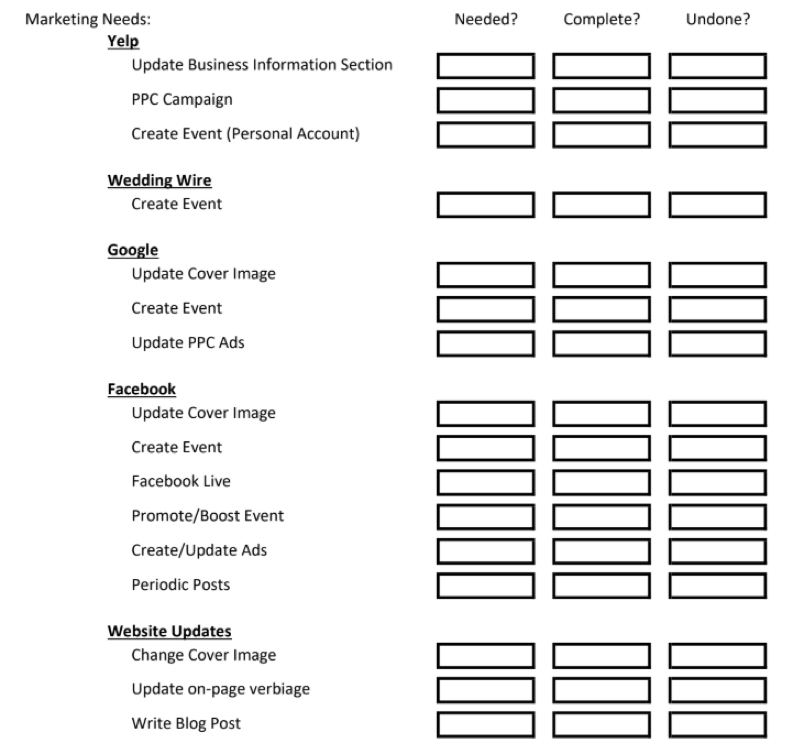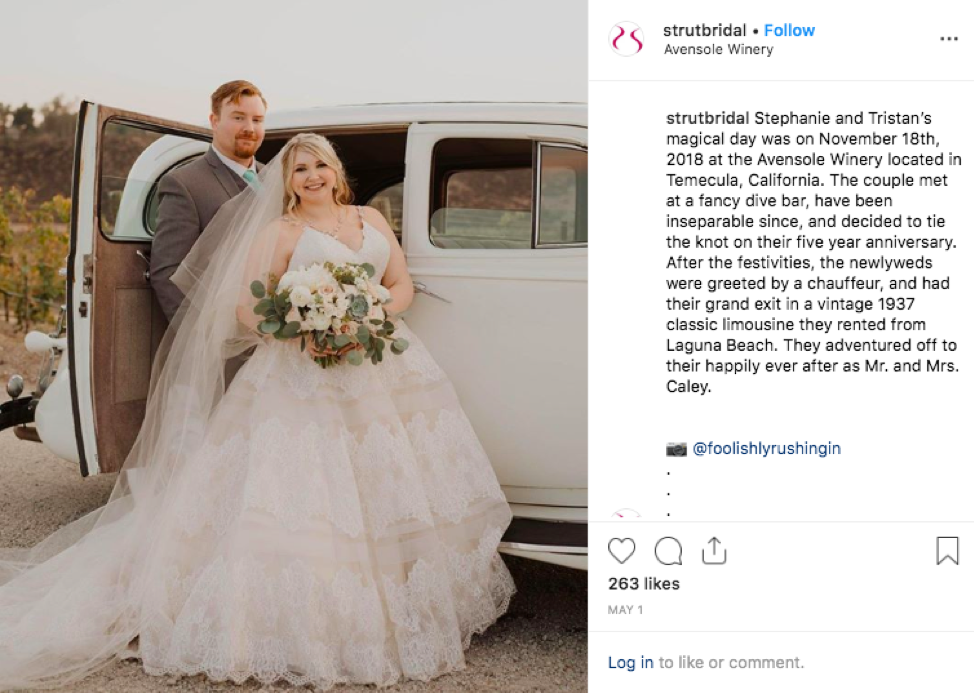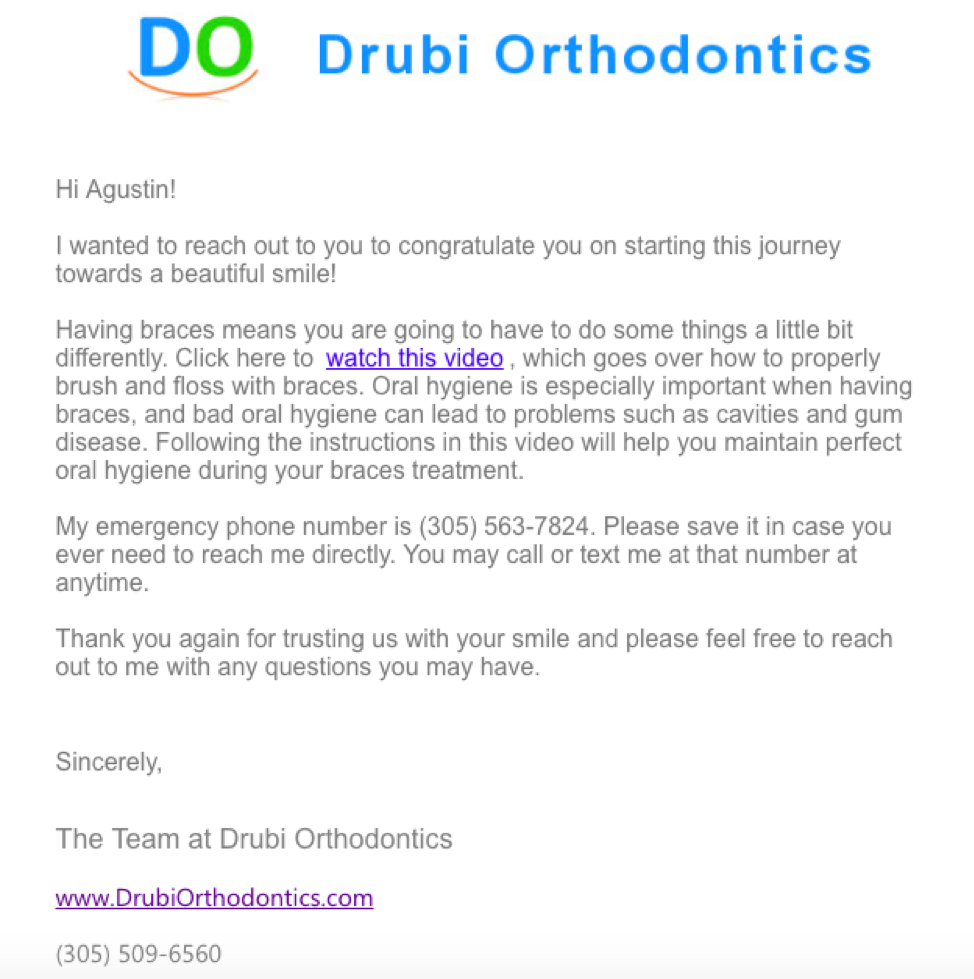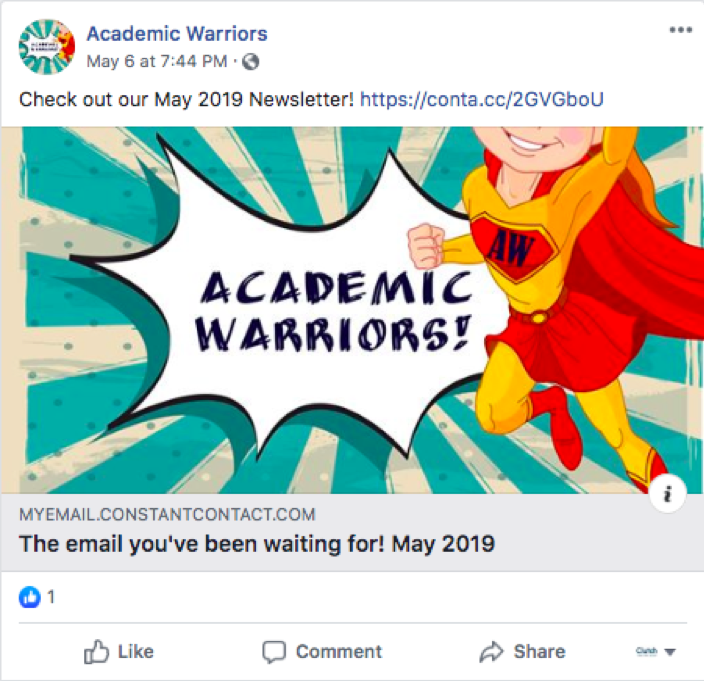How Small Businesses Can Use Communication Channels and Connect With Customers

How Small Businesses Can Use Communication Channels and Connect With Customers
Small businesses can use communication channels such as social media, email, their website, direct mail, and press releases to relay specific messages to their audience. However, businesses should carefully consider the nature of their message, their target audience, and what kind of return they hope to gain before selecting a communication method.
Small businesses have the opportunity to communicate with their customers in more ways than ever, but that doesn’t mean all of these methods are equally effective in every situation for all businesses.
How a small business chooses to connect with its customers can impact its public relations, branding, and reputation management strategies.
The Manifest surveyed 529 small businesses from across the U.S. to understand how they communicate with their audience and which communication channels they prefer.
We use the Small Business Administration’s definition of small businesses as those that have limited revenue and between 1 and 500 employees.
Small businesses can use this report to learn the benefits and drawbacks of commonly used communication platforms.
Our Findings
- Most small businesses opt for online communication channels such as social media (67%), email (57%), and their business’s website or blog (47%) due to these channels' direct, trackable, and immediate nature.
- Small businesses also use offline channels such as direct mail (28%) and more traditional press releases (15%).
- Most small businesses (64%) share announcements with customers using 2 or more communication methods.
- Although most small businesses use only online channels (69%) to communicate with consumers, 23% use a combination of online channels and direct mail, and 5% use direct mail only, indicating that offline channels still offer value to small businesses.
- More than one-fourth of small businesses (28%) use direct mail to communicate with consumers despite the prevalence of online communication channels.
- Fewer than half of small businesses (47%) use their website or blog to share news with their customers, which means that 53% of small businesses miss out on the opportunity to create a “hub” of information for existing and potential customers.
- More than half of small businesses (57%) use email to connect with customers because it is efficient and inexpensive.
Adopt an Omnichannel Approach for a Well-Rounded Communication Strategy
Small businesses should use more than one communication channel to connect with their audience.
Some of the top communication channels include online platforms such as social media (67%), email (57%), and the small business’s website or blog (47%).

These platforms, especially social media, allow small businesses to communicate with their customers quickly.
Small businesses also use offline channels such as direct mail (28%) and more traditional press releases (15%).
Most small businesses (64%) share announcements with customers using two or more communication methods.

If a small business has an announcement or something it would like to share with its audience, it should share the information in as many ways as it can.
“Promote the promotion,” said Ed McMasters, director of marketing, communications, and design at FUSIONWRX, a PR consulting firm. “Don’t use just one channel, but don’t repeat the same message on different channels. Mix it up a little here and there depending on your audience.”
With so many communication options to choose from, why stop at just one? There is a higher chance your target audience will see your message when you use multiple communication channels.
“You constantly build your reputation by using all of your communication channels,” said Mike Rosenberg, CEO of Veracity, a PR firm in Portland, Ore.
Using multiple communication channels helps businesses reach more people and build their reputation.
Conversely, with so many communication options to choose from, small businesses may become overwhelmed with all of the options available to them.
Prioritize Communication Channels Based on Customer Preferences
It’s not necessary to give equal attention to all communication channels if small businesses can identify which channels are most popular and effective with their target audience.
Ann Campeau co-owns Strut Bridal Salon, a bridal store for curvy and plus size brides, and uses a variety of communication channels that include:
- Text messages
- Emails (both automated and personalized)
- Social media
- Google My Business
- Yelp
- Google PPC ads
- A blog and website
- Local event calendars
- Direct mail
“It feels like so much,” Campeau said. “It's like a pyramid, where the bigger the event, the more methods of communication we pile on.”
To stay focused on what she hopes to accomplish through each of these communication methods, Campeau keeps a list of her business’s marketing priorities.

Campeau can better plan how she will communicate various announcements to her customers by ranking the different communication channels in order of importance.
Campeau prioritizes Facebook and Instagram because she knows most of her customers spend a lot of time on social media.
For example, Campeau reaches her target audience on Instagram by posting photos of customers’ weddings.

Campeau can connect with her clients on a more personal level by sharing images of them on social media.
Social media also helps Campeau announce company events.
“We always use [Facebook and Instagram],” Campaeu said. “Email and Google My Business are on the next step up, [and] we reserve direct mail for the most important events.”
Campeau leads more effective communication campaigns and reaches the widest possible audience by prioritizing different communication channels for different types of announcements.
Businesses can get the most out of their communication campaigns by prioritizing the channels they will use based on the message they want to communicate and their target audience.
Send “Snail Mail” to Stand Out From Competitors
With so much focus on the digital space, it can be easy to forget about traditional offline communication channels such as direct mail, or “snail mail.”
Although most small businesses (69%) communicate with customers through online channels only, 23% of small businesses use a combination of online channels and direct mail.

One in 20 businesses (5%) use only direct mail to communicate with customers.
“Direct mail is an often-maligned channel that people think is over,” said Jose Villa, president of Sensis Agency, an advertising firm in Los Angeles. “But in a digital world where people have short attention spans online, direct mail still gets people’s attention.”
In a digital world where people have short attention spans online, direct mail still gets people’s attention.
Using more traditional communications can help digitally driven businesses add a more personal touch to their correspondence with customers.
“We use digital outreach for nearly everything, except ‘thank yous,’” said Danielle Bayard Jackson, co-founder of STRIDE Media Group, a public relations agency in Tampa. “There is something powerful and incredibly memorable about receiving a physical thank-you card that was specifically addressed and mailed to you.”
While direct mail can be a great way to maintain relationships with customers, it can also be part of a larger brand awareness or customer acquisition strategy.
For example, James McGrath, co-founder of Yoreevo, a real estate company in New York City, uses direct mail to communicate with potential customers because his competitors do not use the channel.
“Email is free, so everyone does it, and it's very difficult to stand out,” McGrath said. “Mailers, on the other hand, have a cost, but even if someone is just going to toss it, they're still going to look at it, which is half the battle.”
People will still glance at direct mail, even if it’s just to throw it out. Emails, on the other hand, can be deleted easily without the recipient ever opening them.
McGrath mails postcards about Yoreevo to increase brand awareness.

The postcard includes McGrath’s photo beside his business partner’s, contact information, a simple URL, and reasons why choosing Yoreevo would benefit the homeowner (i.e., a 1% listing fee).
For this approach to be effective, McGrath has to be aware of who Yoreevo’s target audience is.
“We know how long the average owner stays in an apartment, so those are the apartments we hit,” McGrath said, “If someone bought six months ago, they're obviously not planning on selling, so it's less effective.”
McGrath sends postcards only to people who are likely to sell their apartments soon.
Businesses can send customers announcements through direct mail by knowing who their target audience is.
Of course, offline communication methods might not be the right choice for every small business, which makes it important for businesses to think critically about which channels are most appropriate for different types of announcements.
Direct Mail Is More Difficult to Track but Not Impossible
One of the many reasons most businesses prefer online communication methods is the ease of trackability.
“Direct mail is very tough to track,” McGrath said. “It's easy to cut spending on direct mail when you're getting more trackable results online, but that doesn't mean the returns for 'snail mail' aren't there.”
It's easy to cut spending on direct mail when you're getting more trackable results online, but that doesn't mean the returns for 'snail mail' aren't there.
More than one-fourth of small businesses (28%) use direct mail to communicate with consumers, signaling there is still value in the communication channel, and although tracking the success of direct mail campaigns is not easy, it can be done.

To increase their chances of a successful “snail mail” campaign, businesses can:
- Make their mail reusable (e.g., a postcard that is also a magnet)
- Include a QR code for tracking
- Include personalized yet simple URLs for tracking
- Offer a discount if customers bring the offer with them to the store or event
If businesses want trackable, quantifiable results from direct mail, they need to get creative and figure out how they can incentivize recipients to cash in their mail.
Regardless, direct mail is still an effective way to spread brand awareness, as people’s mailboxes tend to be less crowded than their inboxes.
Keep Your Website Relevant With Useful Content
A small business’s website is the channel closest to its brand and can be used to communicate with both existing and potential customers.
Nearly half of small businesses (47%) use their website to connect with customers.

Businesses can use their websites to consolidate the information shared through different communication campaigns.
For example, if a business emails customers about an upcoming event, it can also add the announcement to its website, like Campeau did to announce Strut Bridal’s new private appointment option.

This allows the website to act as a “hub” where customers can expect to find all the information from each of the business’s communication campaigns in one place. However, businesses should always optimize the content for the web.
“Website content typically needs to be shorter form, and it needs to be optimized for mobile consumption,” Villa said. “You can’t just throw a press release on your website - You need to make sure your content is optimized for its environment.”
You can’t just throw a press release on your website - You need to make sure your content is optimized for its environment
Small businesses should make sure the content on their website follows SEO best practices and contains valuable keywords without “keyword stuffing.”
The content on a business’s website also needs to be optimized for the intended user, meaning it’s compatible with both desktop and mobile view, contains visuals, is formatted to accommodate how people read content online, and caters to the users’ interests.
For example, The Critter Depot, an insect e-commerce store that sells live crickets to reptile owners, created a forum to use its website as a virtual gathering place for reptile owners.
“We're offering a communication channel that no other insect e-commerce channel is offering, which is giving us a leg up on the competition,” Neal said.
The Critter Depot’s forum was designed to be a place where reptile owners can interact with others, see company announcements such as upcoming sales, and access content related to reptile care.

Experimenting with their website, like what The Critter Depot does, is one way small businesses can figure out what works for them. It’s important, however, to always conduct audience and competitor audits and perform thorough research before diving into a new project.
Small businesses should treat their websites as dynamic rather than static tools that customers can use to navigate the various dimensions of their brand.
Send Relevant Emails to Customers Based on Their Needs
It’s estimated that approximately three billion people worldwide use email, making email an effective, inexpensive way for businesses to reach the masses.
As a result, more than half of small businesses (57%) use email to connect with customers.

Sending emails costs nothing and can be done en masse, which saves your business time and resources. However, this communication channel still comes with challenges.
“It takes time to build and maintain a quality email database,” Villa said. “Then, once it’s built, businesses need to maintain it, constantly clean their lists, and use them properly with the right kind of communications.”
Even though it can be challenging for businesses to build a quality email list, email has the best return on investment (ROI) for customer retention, communication, and acquisition.
Small businesses, however, need to make sure their emails contain relevant information.
Agustin Drubi, an orthodontist in Miami, uses email to connect with clients and customizes the emails he sends based on his clients’ individual needs.
“We have created specific email follow-up campaigns for different kinds of patients,” Dr. Drubi said. “[The campaigns] send them specific emails regarding their treatment.”
Dr. Drubi sends an email that answers common questions to clients who are about to begin orthodontic treatment, for example.

The email includes a link to a video that covers how to maintain oral hygiene with braces.
“This greatly reduces the time we have to spend going over all these details in the office and makes our workflow more efficient,” Dr. Drubi said.
Small businesses that use email as a marketing tool to share relevant information with customers at different buying stages can make their in-office workload lighter.
Avoid Mutually Exclusive Communication Channels
Small businesses that use more than one communication channel can use them to promote each other.
For example, Allison Bruning, owner of Academic Warriors, an online school for autistic, gifted, and special needs students, uses social media to promote Academic Warriors’s email newsletter.

Academic Warriors has a better chance of gaining email subscribers by promoting this newsletter on a communication channel that already sees engagement.
Additionally, Campeau uses direct mail to promote Strut Bridal’s in-store events and social media accounts.
McGrath uses direct mail to promote Yoreevo’s website, and Neal uses email to promote The Critter Depot website’s new forum.
Small businesses can strengthen their communication campaigns by syncing their outreach efforts rather than keeping them separate.
Match the Communication Channel to What You Hope to Gain From Reaching Out
Every communication channel works differently and can serve different purposes depending on what the small business hopes to achieve through the communication effort.
“The first thing you need to know is who your customers are,” Rosenberg said. “It [also] depends on what type of message you’re going after.”
Rosenberg said that businesses should ask themselves:
- Is the message proactive?
- Is it a community message?
- Is it a news announcement?
- What is your end goal?
- Are you looking for followers to take a certain action (e.g., buy something, engage in conversation, sign up for a newsletter)?
- Is it customer service?
- Are you responding to a crisis?
If a company wants to increase consumer engagement with its brand or start a conversation about a product, it may turn to social media.
If a company wants to make an announcement on a new product or service it’s offering, it may want to use email and its website.
If a company wants to bring people into its store, it might try a direct mail campaign to customers offering in-store or online discounts.
Businesses choose their communication methods depending on the message they want to convey and the type of return they hope to gain.
Respond to Crises in a Way That Doesn’t Destroy Your Business’s Credibility
It’s important for businesses to think about how they communicate corporate news to their customers, such as new hires, new opportunities, or a milestone met, but businesses also need to think about communication channels when drafting their crisis-communications strategy.
“Bad things happen to good companies all the time,” said Bryan Phelps, CEO of Big Leap, an online reputation management company. “Handle the crisis in a personalized manner, especially if there were certain people you know were affected.”
Bad things happen to good companies all the time. Handle the crisis in a personalized manner, especially if there were certain people you know were affected.
How a business responds to crises can greatly impact their reputation and credibility.
Patrick Pitman, president of E-Business Coach Inc., a business consulting agency in Texas, said his company fell victim to a breach in 2006 when its servers were hacked, and sensitive cardholder data were compromised.
Immediately, Pitman made sure the compromised system was taken offline to prevent further damage. Next, he turned his attention to the well-being of his customers.
“I did not send an email, not at first,” Pitman said. “Eventually, a daily and then weekly 'brief' was emailed to customers giving them a consistent, straightforward summary of the situation as it unfolded. But to start, everyone got a phone call.”
When dealing with a crisis, whether it’s a data breach, a series of scathing, fake reviews, or a company executive behaving unlawfully, businesses should communicate directly to customers, especially if it’s something that directly impacts their wellbeing.
Public relations firms and experts recommend businesses also use multiple channels to address the crisis, depending on the crisis’s nature, to make sure people are aware of the issue and the steps the brand is taking to resolve it.
Small Businesses Should Choose Communication Channels Depending on Their Audience and Message They Want to Convey
Both online and offline communication channels can offer value to small businesses looking to round out their communications, public relations, and reputation management strategies.
Businesses should look to multiple communication methods to make sure the largest audience possible receives their messages and should always consider their audience and message before deciding on a communication channel or combination of channels.
About the Survey
The Manifest surveyed 529 small businesses from across the U.S., 415 of which indicated they monitor their online reputation at least quarterly.
Most survey respondents were male (52%), and 48% were female.
Twenty-nine percent (29%) of respondents were millennials (ages 18-34); 45% were Generation Xers (ages 35-54); and 27% were baby boomers (ages 55 and up).
Fourteen percent of small businesses surveyed (14%) have 1 employee; 64% have 2-50 employees; 25% have 51-250 employees; and 7% have 251-500 employees.
